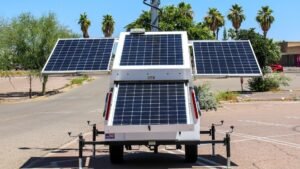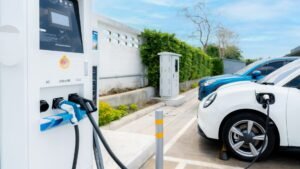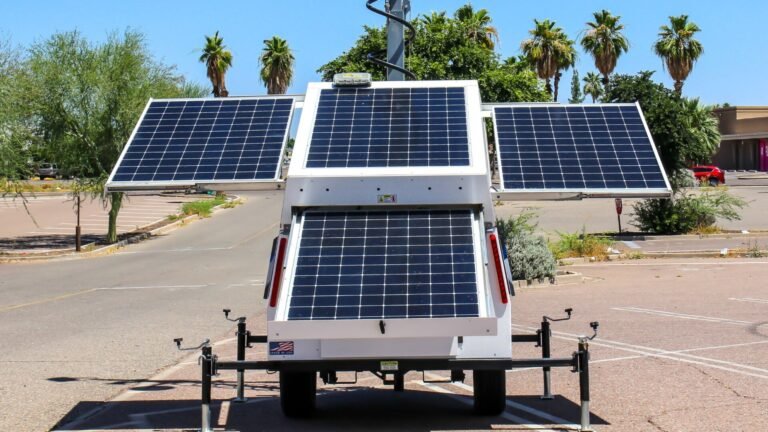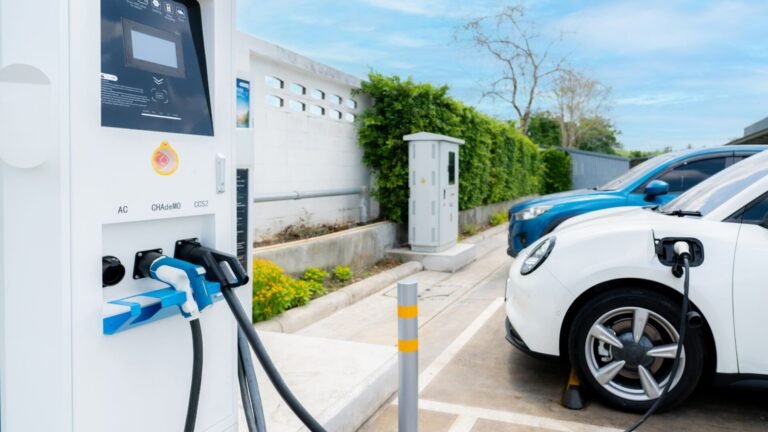In recent years, the intersection of microfinance and solar energy has become a beacon of hope for remote businesses around the globe.
This innovative coupling offers a sustainable and economically viable solution to energy access issues that plague remote areas, transforming the way businesses operate beyond the conventional grid.
With the latest statistics showing a significant increase in solar energy adoption in developing regions, thanks in part to microfinance solutions, there’s a growing trend of businesses leveraging this synergy to overcome infrastructural limitations.
In this context, companies like Tamesol are stepping up, providing cutting-edge solar solutions that are increasingly becoming accessible through microfinance models.
This blog aims to shed light on the critical aspects of microfinance models for solar energy, tailored specifically for businesses operating in remote areas, and how these strategies are fostering a new era of economic growth and sustainability.
Understanding Microfinance for Solar Energy
Microfinance has emerged as a transformative tool, especially in the realm of solar energy, offering a lifeline to businesses in remote areas previously marginalized by traditional financial systems.
It encompasses a variety of financial services including small loans, savings accounts, insurance, and payment plans, specifically tailored for individuals or businesses that lack access to conventional banking and related services.
In the context of solar energy, microfinance has become increasingly pivotal, with the global microfinance market expected to reach significant growth, reflecting an increasing trend towards renewable energy investments in underserved areas.
This financial model enables remote businesses to overcome one of the most significant barriers to solar adoption: the initial capital expenditure.
By the end of 2024, an estimated 2.5 million solar home systems were financed through microloans, illustrating the vast potential of microfinance in catalyzing solar energy adoption.
These statistics underscore the growing recognition of solar power as a viable, cost-effective solution for energy needs in remote locations, further supported by microfinance’s role in bridging the affordability gap.
This synergy between microfinance and renewable energy not only facilitates broader access to clean energy solutions but also contributes to economic empowerment and sustainable development in remote communities worldwide.
The Benefits for Remote Businesses
- Cost-Effective Energy Solution: For remote businesses, transitioning to solar energy through microfinance arrangements is not just a shift in energy source but a strategic financial decision.
In 2024, with the global average cost of solar energy continuing to decline, businesses are finding solar power increasingly accessible.
The reduction in operational costs is tangible, with companies reporting up to a 75% decrease in energy expenses after switching to solar.
This significant cost saving is vital for remote businesses, where traditional energy sources can be prohibitively expensive due to logistical challenges.
By adopting solar energy, these businesses can reinvest the savings into other areas, enhancing productivity and profitability while maintaining a competitive edge in their respective markets. - Enhanced Business Operations: The reliability of solar power translates directly into enhanced business operations. In remote areas, where power outages can be frequent and unpredictable, having a consistent energy source can be a game-changer.
For example, in the agricultural sector, solar-powered irrigation systems have led to increased crop yields and more predictable harvests.
In the healthcare sector, clinics can maintain cold storage for vaccines and operate medical equipment without interruption.
Similarly, educational institutions can extend learning hours and utilize digital resources, contributing to better educational outcomes.
As of 2024, businesses leveraging solar energy report significant improvements in operational efficiency and service delivery, underscoring the transformative impact of consistent and reliable energy access. - Sustainable Growth: The global push towards sustainability has made eco-friendly business practices not just a moral choice, but a marketable asset.
By integrating solar energy, businesses in remote areas are not only reducing their carbon footprint but also aligning with the sustainability goals of their customers and partners.
This commitment to sustainability can enhance a business’s brand image and open up new market opportunities, particularly as consumers and corporations increasingly prefer to engage with environmentally responsible companies.
In 2024, the trend towards green business practices continues to gain momentum, with a growing number of companies showcasing their sustainability efforts as a core part of their business identity.
Adopting solar energy positions these businesses as leaders in the global shift towards sustainable development, attracting environmentally conscious customers and fostering long-term growth.
Types of Microfinance Models for Solar Energy
Pay-As-You-Go (PAYG)
The Pay-As-You-Go model stands out as a remarkably flexible financial solution that is meticulously designed to cater to the unpredictable income patterns characteristic of many remote enterprises.
This model offers a pragmatic approach to financial management, allowing businesses to pay for their solar energy systems in small, manageable installments.
This flexibility is not just about easing financial burdens; it also empowers businesses to invest in solar energy without the need for substantial upfront capital.
By aligning payment schedules with income flows, the PAYG model ensures that solar energy is accessible to a broader range of businesses, including those in the most remote areas, thereby fostering inclusivity and promoting the adoption of renewable energy solutions.
Solar Leasing
Solar leasing emerges as another innovative financial model, meticulously crafted to eliminate the daunting barrier of high initial investment typically associated with solar power installations.
Under this model, businesses are allowed to adopt solar energy solutions by paying a fixed, manageable monthly lease fee, effectively bypassing the hefty upfront costs.
This approach not only makes solar energy more accessible but also mitigates financial risk, as it often includes maintenance and repair services within the leasing agreement.
Consequently, businesses can enjoy the myriad benefits of solar energy, including reduced electricity costs and a lower carbon footprint, without the burden of significant initial investments or concerns over system maintenance.
Microloans
The advent of microloans tailored specifically for solar system procurement represents a significant leap forward in bridging the financial gap for remote businesses keen on embracing solar energy.
These specialized microloans offer more than just capital; they come with lower interest rates and repayment terms that are thoughtfully designed to be within reach of small-scale businesses.
This approach not only facilitates the acquisition of solar energy systems but also encourages financial institutions to invest in the green economy.
By providing a financial lifeline to businesses in remote areas, micro-loans for solar systems play a crucial role in promoting sustainable development, enhancing energy security, and contributing to the global effort to combat climate change through the adoption of renewable energy sources.
Key Considerations for Businesses
When businesses contemplate integrating solar energy into their operational framework, the decision transcends mere environmental stewardship; it becomes a strategic financial and operational consideration.
The transition to solar power is not just about harnessing clean energy but about leveraging this transformation for competitive advantage, operational efficiency, and sustainability.
Here, we delve deeper into the key considerations businesses must navigate to ensure their solar energy investments align with their broader strategic objectives.
Assessment of Energy Needs
For businesses venturing into the solar energy realm, a meticulous evaluation of energy requirements forms the bedrock of a successful transition.
This step is not merely about quantifying current energy usage but involves a comprehensive analysis to forecast future energy needs in line with business growth trajectories.
An accurate assessment ensures the selected solar power solution not only caters to present operational demands but is also scalable to accommodate expansion, all while optimizing financial outlays.
It’s about striking a delicate balance between operational efficiency and economic viability, ensuring the solar installation is neither underutilized due to overcapacity nor strained under the pressures of unmet energy demands.
Understanding the Terms
The financial landscape of solar investments is complex and requires businesses to navigate through various financing options, each with its unique terms and conditions.
Clear understanding and strategic selection of these financial models are paramount. Businesses must meticulously evaluate the terms of financing to ensure they align with their fiscal strategies and operational milestones.
This diligence helps in avoiding binding obligations that might constrain the business’s financial agility. The objective is to secure a financing arrangement that supports not just the immediate implementation of solar technology but also accommodates the dynamic nature of business growth and market evolution.
Technical Support
The efficacy of a solar energy system is not solely dependent on the initial installation but on the continuum of technical support and maintenance it receives.
For businesses, uninterrupted operational efficiency is non-negotiable; thus, securing robust technical support is critical. This involves partnering with solar providers who not only offer initial installation expertise but also commit to long-term maintenance and technical assistance.
Such support ensures solar systems operate at peak efficiency, minimize downtime, and extend the lifespan of the investment.
It’s a strategic move to safeguard operational continuity and maximize the return on investment in solar technology.
Regulatory Compliance
Navigating the legal landscape of solar energy installations is a critical consideration for businesses. Compliance with local regulations, industry standards, and environmental mandates is not optional but a fundamental requirement.
This adherence is twofold: it ensures the legal operation of solar installations and aligns with corporate social responsibility objectives.
Businesses must proactively engage with regulatory frameworks, obtaining necessary permits, and ensuring their solar power solutions meet all legal and safety standards.
This diligence not only mitigates legal risks but also positions the business as a responsible entity in the corporate ecosystem, enhancing its reputation among stakeholders and the community at large.
In conclusion, the transition to solar energy for businesses is a strategic decision that extends beyond environmental considerations to encompass financial, operational, and legal dimensions.
By meticulously addressing these key considerations, businesses can ensure their move towards solar energy not only contributes to a sustainable future but also aligns with their strategic goals, operational efficiencies, and growth aspirations.
Conclusion
As the global community moves towards more sustainable energy solutions, microfinance models for solar energy are proving to be a lifeline for businesses in remote areas.
These models not only enhance energy access but also contribute to economic empowerment and environmental sustainability.
Companies like Tamesol are at the forefront of this movement, providing innovative solar solutions that are accessible through various microfinance options.
By embracing these opportunities, remote businesses can not only illuminate their operations but also pave the way for a brighter, more sustainable future.





